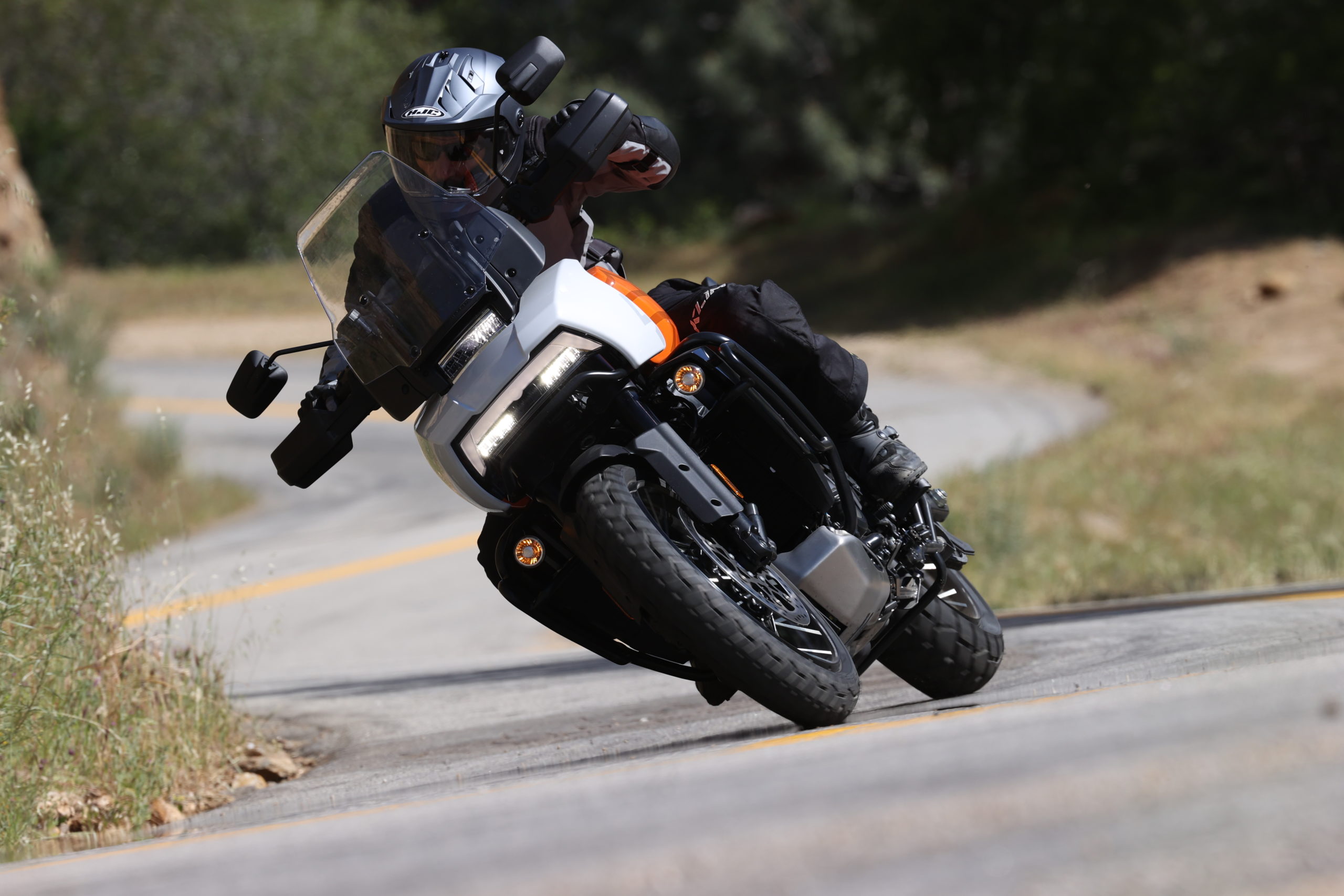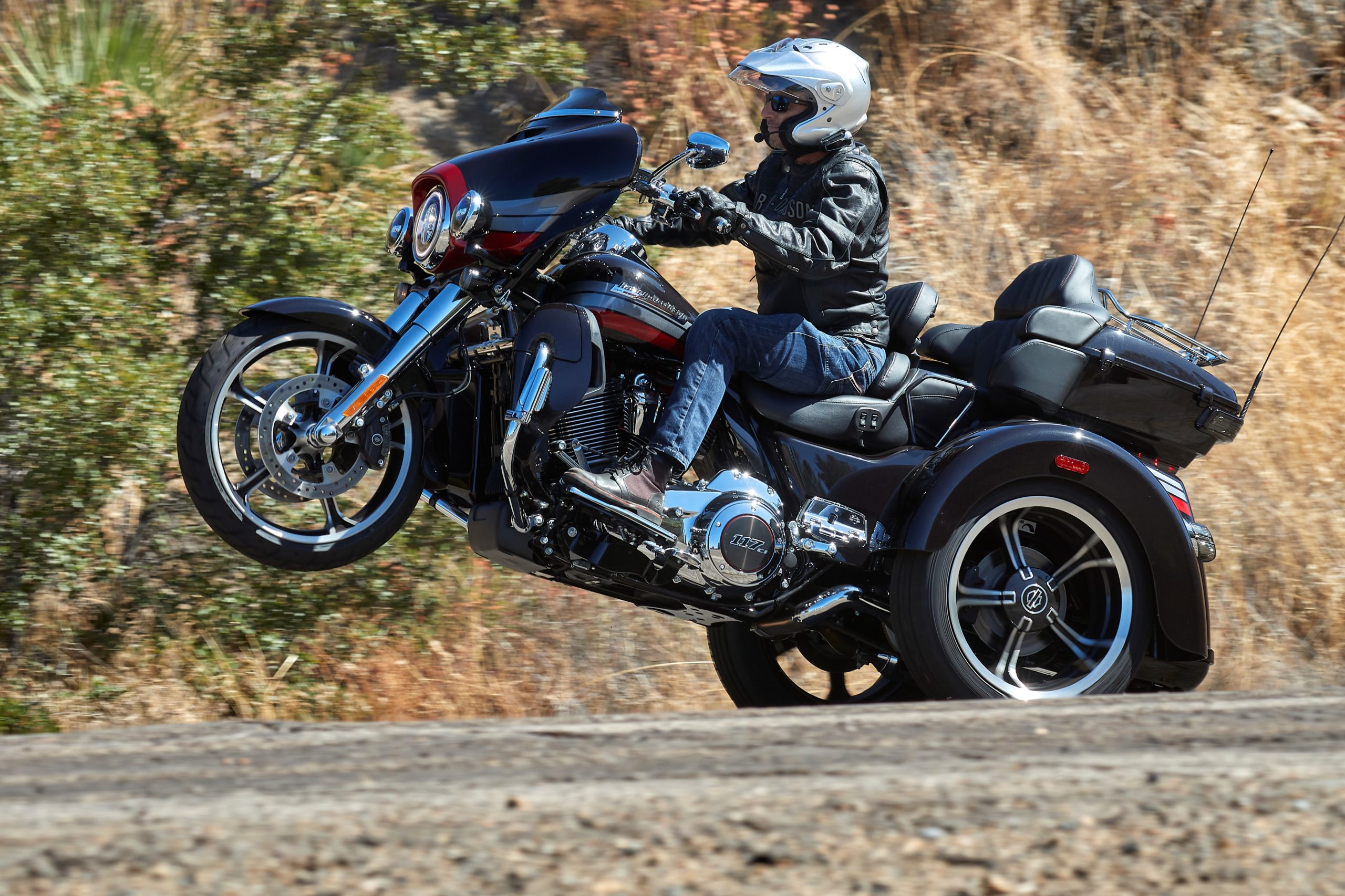It’s hard to imagine a more piteous sight than that of a mature male bald eagle, the lord of the sky, the top of the food chain, the proud symbol of strength and independence and indomitability, hobbling crippled and dazed along a roadside like a punch-drunk hobo. But that’s just the sight that Brian Baladez happened upon while riding his Harley on a remote county road in Northern Wisconsin on August 3. Sensing that something was tragically amiss, Baladez doubled back to investigate.
It’s also hard to imagine a dicier undertaking than that of rendering aid to a full-grown raptor with a flesh-tearing beak and stiletto-sharp talons capable of crushing bone, but that’s just what Baladez decided to attempt. He dismounted and pursued the freaked-out and flightless animal into the high weeds and managed, after a struggle that got him bit and his leather jacket ripped up, to bundle the big bird up in the jacket. He returned to his bike and in true biker fashion bungeed the bird to the top of a saddlebag. He rigged it so the raptor’s head was sticking out that it might enjoy the view while, as Baladez described it to the Duluth News Tribune, “We went for a ride to find some help.”
A 50-mile ride. Seriously. All the way to the Duluth Zoo. That’s a logical destination under the circumstances, you’d think, but upon arrival he was informed that the zoo was ill-prepared to receive a sick eagle and directed him instead to the home of a wildlife rehabilitation expert on the other side of town. Sigh.
Baladez and his patient set off once again, but in the interim an alert citizen who had spotted him in possession of a bald eagle—a federal offense, wouldn’t you know it—reported it to police, and they intercepted him en route. Quickly sizing up and sympathizing with Brian’s predicament, the police put man and bird in the back of the patrol car and delivered them to their destination.
The next day the bald eagle was checked out by a vet and then transported to the University of Minnesota Raptor Center in Minneapolis to receive treatment for his health problems which were determined to be a broken bone in one wing and a case of lead poisoning. From what they could determine, the injury was several weeks old, and, unable to fly, the eagle had been scavenging on the ground, munching on carrion laced with the lead of bullets.
By then reports of the bird’s plight had made him something of a cause célèbre in Duluth, and an online poll conducted by the Duluth News Tribune gave the animal a fitting new handle: “Harley.”
All in all, this was a truly heartwarming story, but also one that I couldn’t get out of my head. I couldn’t stop wondering about Harley’s condition and progress towards recovery. Call me sentimental, call me obsessive, but I needed fresh news on Harley’s progress and, a week and a half after the incident, I contacted the Raptor Center seeking an update. The response to my inquiry came directly from the top: Dr. Julia Ponder, the executive director of the center. She informed me that Harley was continuing to do well. He was responding to treatments to remove the lead from his system, which was at a debilitating but thankfully nonlethal level. The wing is also on the mend, though it will be “several weeks” before the center can begin to evaluate him for flight ability.
In the course of a year, the Raptor Center cares for about 100 eagles, and fully 30 percent of those birds suffer to some extent from lead poisoning. Some don’t recover. I don’t know about you, but I find that appalling in a day and age when we know the peril posed to their population—which only in recent years has begun to recover from the effects of DDT that drove the species to the brink of extinction—by the use of lead ammo and tackle. There are non-lead alternatives for those things, and sportsmen are already required to use them, for obvious reasons, within the habitat range of the few remaining California condors. Extending that mandate is something to consider and press for if you care about the fate of our national bird, and it’s also a marvelous idea to donate some funds to the Raptor Center in support of and appreciation for what they’re doing (www.theraptorcenter.org).
In the short term, though, there’s another pressing cause that needs to be addressed, and it was raised by Dr. Ponder who noted that, “Brian’s jacket was damaged pretty badly. He was totally focused on the eagle and could not have cared less about the jacket.” She then suggested that some caring person or company in the biker community might be willing to replace the man’s leather. I assured her that we’re a generous lot, and I thought we could make that happen. And then I set out to get in touch with Brian to determine what size he wears.
Hah. As it’s turned out, the hero of our story is a hard man to track down. The only lead the Duluth News Tribune could provide me was the phone number of Moldeez Bar in Duluth. I rang the joint up and got a jovial guy named Big Dawg on the line, who, as it happens, had been there with a video camera on the day of Harley’s rescue, and who now serves for all intents and purposes as the media rep for Baladez—a job he only just realized he’s been pushed into, though he has no reliable means of getting ahold of the guy, either. Nevertheless, Big Dawg reckons Baladez to be an XL. So there’s that.
We’ll continue to follow this story and bring you updates on Harley’s status—Dr. Ponder has graciously and enthusiastically agreed to keep us posted. And we’ll continue ringing up biker bars in Duluth in our quest for the elusive Mr. Baladez. In the meantime, though, we need to line up a riding jacket for the guy, and we need to keep Harley’s plight on the radar. Perhaps some big-hearted corporate entity would like to step up and sponsor the care of the animal as well as the care of all the injured raptors at the Raptor Center.
I dunno. An injured bald eagle from Wisconsin named Harley? Who the heck would want to get involved with a story like that?
It’s all right here in the diaries.

















